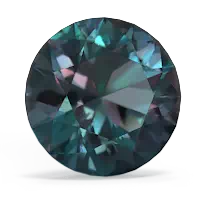


A perfect stone for nighttime wear, a black onyx pendant looks elegant and stylish in white or yellow gold. Although a relatively new gem, alexandrite is said to bring pleasure and love. Wear a created alexandrite pendant to attract the man of your dreams. Tanzanite is the gem of fortune and luck. A tanzanite pendant is said to ease stress and free one from bad habits.